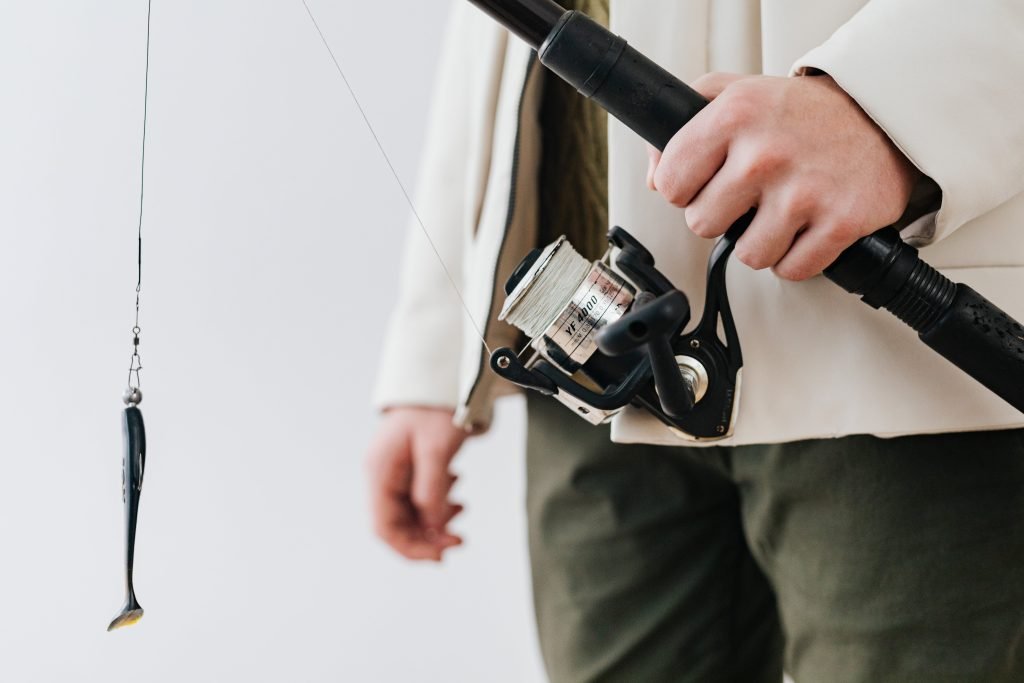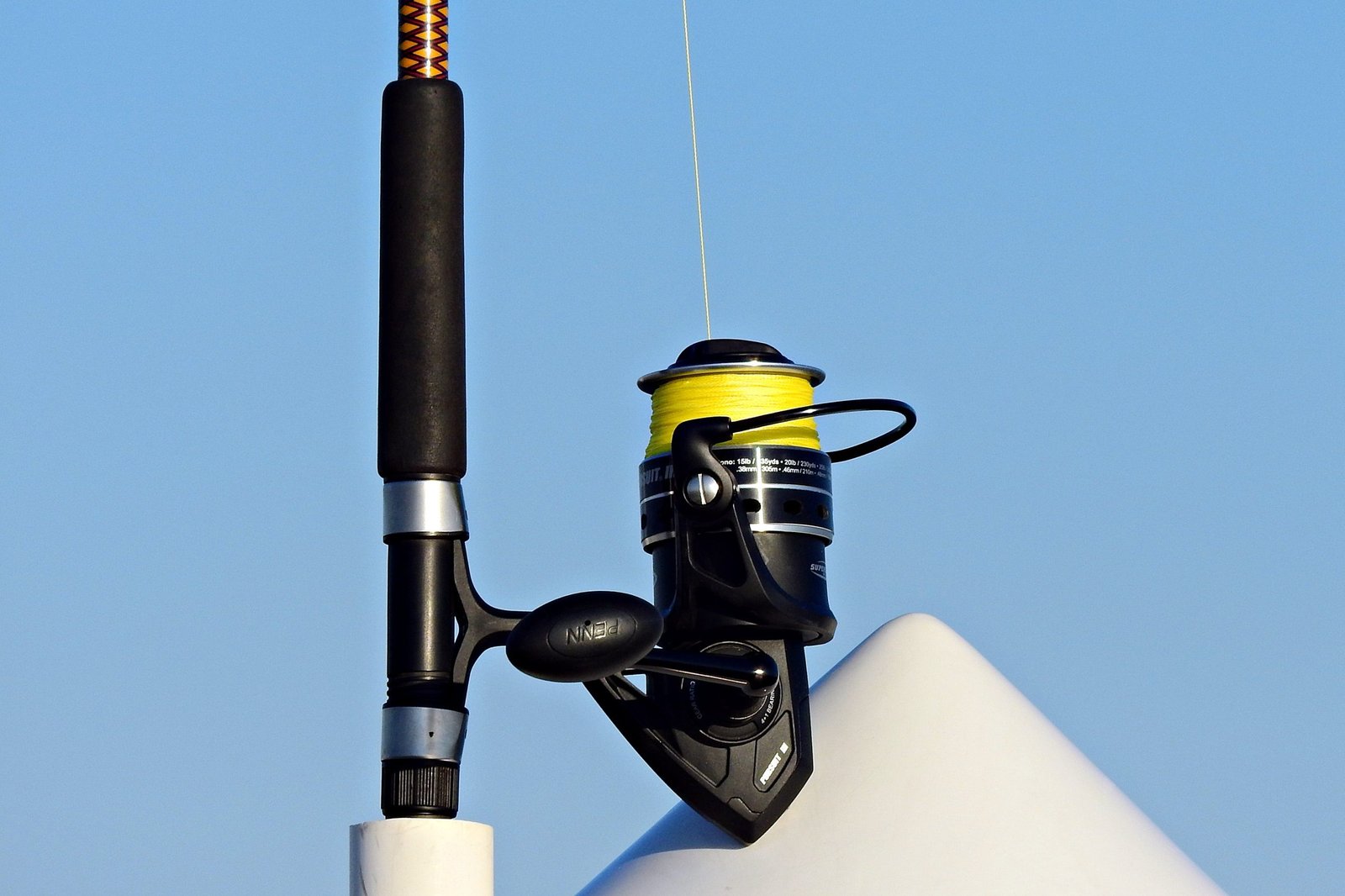
While it may seem unimportant or too niche, jigging is one of the most effective techniques for walleye. And to get the most out of it, you need the right line.
The right line will help you feel even the slightest bite and set the hook effectively, increasing your chances of a successful catch.
If you’ll be jigging for walleye, an 8 to 15lb test braided main line tied to a 6 to 8 lb test fluorocarbon leader is a great choice. Most walleyes don’t exceed 10lbs, and those that do are very rare. A higher test line will help you defeat snags better will give peace of mind in case of a record walleye.
Braided line has almost no stretch, allowing you to feel bites more effectively, and it also helps to set the hook properly. Fluorocarbon is nearly invisible underwater and has excellent sensitivity, making it a great choice for a leader.
If you’re fishing in clear water, going full fluorocarbon may be a better choice as it is nearly invisible underwater. In murky water, a braided line may be more visible to you and therefore more effective.
Does this mean you can’t use mono? Well, it can work, but when you want the best performance, braided and fluorocarbon are the best choices.
Keep reading to discover more details and some of the best options on the market.
Fishing Line Types & How You Can Use Them
Here is a breakdown of three main types of lines, with their pros and cons:
Monofilament Lines
Monofilament lines are made from a single strand of nylon, making them popular among anglers for their affordability and versatility. They are available in a wide range of pound tests, making them suitable for various fishing applications.
One downside to monofilament lines is their visibility in the water, which can spook fish. They also tend to stretch more than other types of fishing lines, which can make it more difficult to feel bites and set the hook.
Braided Lines
Braided lines are made by weaving together several strands of synthetic material, such as Spectra or Dyneema. They are known for their incredible strength and sensitivity, making them a popular choice for jigging walleye.
As mentioned above, braided lines have little to no stretch, which allows you to feel even the slightest bites. They are also highly visible in the water, which can be an advantage when trying to detect subtle movements of the lure.
Fluorocarbon Lines
Fluorocarbon lines are made from a single strand of fluoropolymer, making them virtually invisible underwater. They have little to no stretch, making them highly sensitive and perfect for jigging walleye.
One downside to fluorocarbon lines is their stiffness, which can make them more difficult to cast. They are also more expensive than other types of fishing lines, but their advantages make them a worthwhile investment for serious anglers.
Recommended Fishing Lines for Walleye Jigging

After researching various options, I have found that the following lines are the best for walleye jigging:
))/920580.json)
- Power Pro: This braided line is a popular choice for walleye jigging due to its sensitivity and lack of stretch. It allows you to feel even the slightest bites, making it easier to detect when a walleye has taken the bait. In addition, its thin diameter enables lures to reach deeper depths.
))/1950572.json)
- Berkley Trilene XT: This monofilament line is another great option for walleye jigging. It is strong and abrasion-resistant, which is important when fishing around rocks or other obstacles. Its low memory also helps prevent line twists and tangles.
))/1557331.json)
- Seaguar Red Label: This fluorocarbon line is known for its invisibility underwater, making it less likely to spook wary walleye. It is also sensitive and has low stretch, allowing you to detect bites and set the hook quickly.
))/3266341.json)
- Fireline: This braided line is another popular choice for walleye jigging. Much like the Power Pro, it is strong and durable, yet thin enough to allow your lures to reach deeper depths. Its lack of stretch also makes it easier to set the hook.
Each of these lines has its own unique advantages and disadvantages. It is important to consider factors such as water clarity, depth, and structure when selecting a line for walleye jigging.
But before buying any new line, remember that if it meets the guidelines from above and has decent quality, it’s going to work well.
As always, I hope you learned at least a little something from this article and you have a clear insight about which line you should get.
Until the next one, tight lines!
Frequently Asked Questions
What type of braided line is recommended for walleye jigging?
When it comes to walleye jigging, an 8 to 10 lb test braided main line is recommended. Braided line has almost no stretch, which allows you to feel even the subtlest walleye bites, and the lack of stretch also helps to set the hook effectively (especially at a distance).
Which fluorocarbon leader strength should be used for targeting walleye?
A 6 to 8 lb test fluorocarbon leader is recommended for targeting walleye. Fluorocarbon is virtually invisible in the water, which can make all the difference when targeting walleye. It is also more abrasion-resistant than other types of fishing line, making it less likely to break when fishing around rocks or other underwater obstacles.
What are the advantages of using monofilament vs braid for walleye fishing?
Both monofilament and braid have their advantages when it comes to walleye fishing. Monofilament is more forgiving and easier to handle than braid, making it a good choice for beginners. Braid, on the other hand, has almost no stretch, which allows you to feel even the subtlest walleye bites and set the hook more effectively. Ultimately, the choice between monofilament and braid comes down to personal preference and fishing conditions.
How does line color impact walleye jigging success?
The color of your fishing line can have an impact on walleye jigging success. In clear water, it is best to use a clear or low-visibility line. In murky or stained water, a high-visibility line can be helpful for detecting bites. Additionally, some anglers believe that using a line color that matches the color of the water can help to make your presentation more natural and increase your chances of catching walleye.
What characteristics define the best ice fishing line for walleye?
The best ice fishing line for walleye should be strong, sensitive, and low-stretch. A line with these characteristics will allow you to feel even the slightest bites and set the hook effectively, even in cold water conditions. Additionally, a line with good abrasion resistance is important when fishing around ice and other underwater obstacles.
How should one set up their fishing line for effective bottom bouncing for walleye?
When bottom bouncing for walleye, it is recommended to use a 3-way rig with a 1 to 2 oz weight. Tie your main line to one end of the swivel, and tie a 12 to 18 inch fluorocarbon leader to the other end. Attach a hook to the end of the leader, and bait it with a live minnow or other walleye bait. Cast your rig out and let it sink to the bottom, then slowly reel it in while bouncing it along the bottom. Be sure to keep your line tight and be ready to set the hook at the first sign of a bite.




